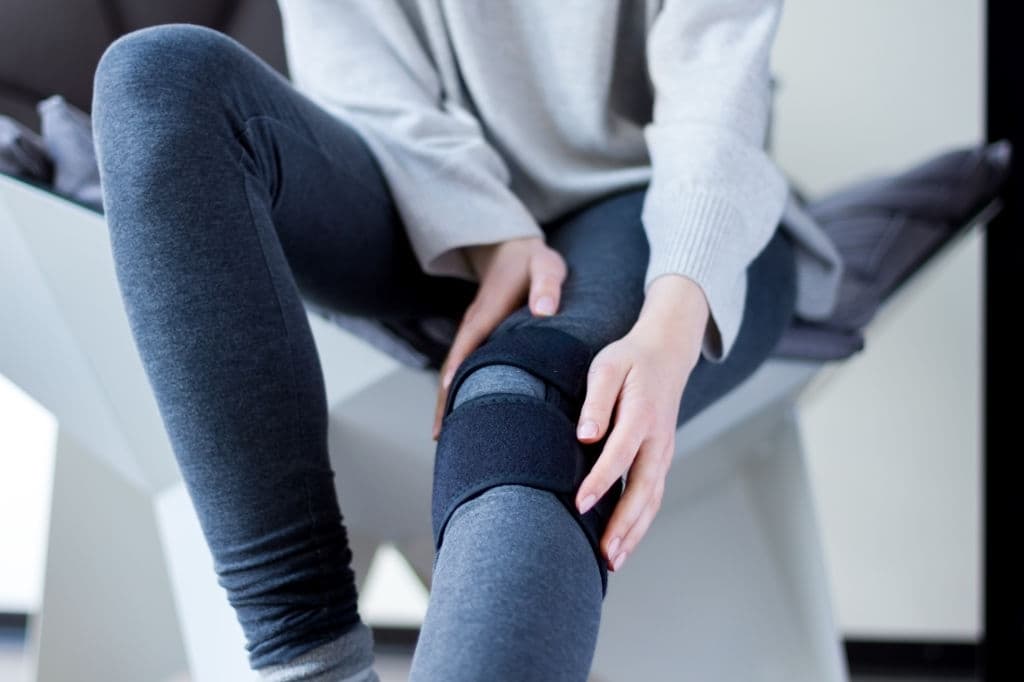Joint discomfort is more common as we get older, but knee aches and pains might be the consequence of a greater problem: osteoarthritis. Knee osteoarthritis is the most prevalent chronic joint disease in the United States, affecting around 31 million people. When cartilage in the joint slowly dissolves, stiffness and edema develops, which worsens over time.
Treatment alternatives have been intrusive for decades, changing the joint through replacement, and requiring reduced amounts of activity in some cases. Nevertheless, a new wave of devices that may tackle the intensity of this illness includes less intrusive alternatives meant to relieve pain and allow patients to maintain their level of activity.
While natural nutrition could provide respite, they aren’t immediate. For example, Flaxseeds contain alpha-linolenic acid could potentially reduce pain symptoms. Or, Basil Oil, extracted from the Basil plant, could act as a natural muscle relaxant.
On the other hand, analgesics such as aspirin, Ketoprofen, and ibuprofen could provide immediate pain relief, but are major reasons for Gastrointestinal Problems. Long-term usage could aggravate stomach ulcers and other problems in the small intestine. Wrapping your knees, by far is an absolutely non-invasive yet immediate pain-respite.
Table of Contents
Do You Need To Know How To Wrap Your Knee?

Yes, knee wrapping is not essentially the most difficult thing and it is rather convenient for one to know how to wrap their own knees as applying mild compression to the injured area will assist reduce swelling and aid in the restoration of blood and lymph flow to the heart. It’s critical to wrap your knee appropriately so that you can adequately support your knee joint while also ensuring that you don’t limit your knee’s movement or impair circulation.
What Does It Take?
1. An ordinary elastic bandage is enough
When you have reusable elastic bandages at your disposal, there is no point in sticking to the basic elastic bandage. However, if you are one who is not frequented by knee or joint pains and this one particular incident happened to be an accident, you can go for the very ordinary elastic wraps.
2. Choose reusable elastic bandages
Reusable elastic bandages like the short stretch bandages or crepe bandages are woven, elasticized bandages that are typically composed of cotton. Because of the way they’re weaved, the fibers interlock, resulting in increased compression.
As a result, they are more successful when functioning under increased pressure. Because they are reusable and readily cleaned, they are cost-effective for those suffering from venous edema, lymphedema, post-traumatic swelling, and other conditions. Furthermore, they don’t restrict joints or muscles from flexing because they’re elastic.
Knee Wrapping Technique
Here is how to wrap a knee the correct way.
Start by picking a regular elastic bandage, maybe the type with separate clips to close it or the one with a Velcro-type closure.
- Wrap the bandage around the leg from under the knee to mid-calf level, circling a couple of times to secure the bandage.
- Continue wrapping the bandage through the front about the third time you pass behind the knee, but bring it crosswise from behind the knee in back to over the knee as you approach the front. To secure the top, wrap the bandage around the leg above the knee in a full circle.
- Repeat the process several times and secure the bandage with the clips provided.
Do Bandages Help With Knee Problems On A Regular Basis?
Elastic bandages are widely used to treat a variety of musculoskeletal conditions, including osteoarthritis of the knee (OA). Some patients with knee OA who use bandages report pain alleviation as well as a decrease in the sensation of “giving way” and the fear of falling. To yet, there is little evidence to back up this practice. However, a bandage may theoretically increase knee proprioception by providing more skin sensory input, which could improve feeling and hence lead to better coordination.
Do Athletes Need Elastic Bandages?
Athletes do indulge in athletic taping where they apply pressure-sensitive tapes or surgical or elastic therapeutic tape directly to the skin in an attempt to maintain a stable position of muscles and bones during strenuous athletic activity. It compresses soft tissues to decrease swelling, supports anatomical structures involved in the injury, serves as a splint or secures a splint, secures bandages or dressings, protects the damaged joint from re-injury, and protects the affected part while the injured part is being treated.
Conclusion
Though many people are unaware that they have osteoarthritis, it’s critical to get treatment as soon as symptoms appear to determine whether an intervention will help prevent the knee joint from deteriorating further.
We can start working toward a future where knee pain is more readily treated and controlled by relieving some of the strain off the knee joint and allowing patients to have improved function, reduced pain, and eventually a delayed complete knee replacement.




